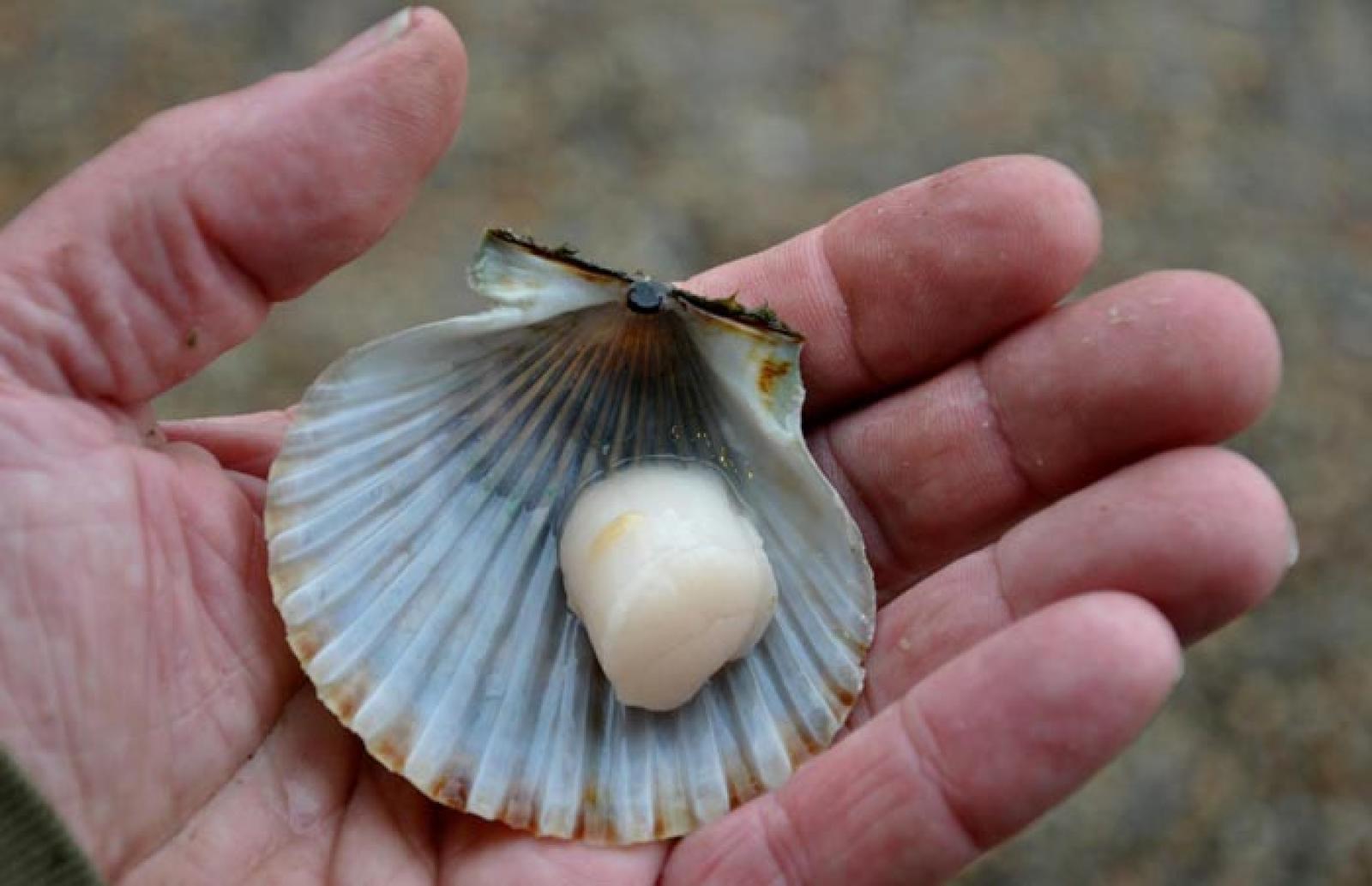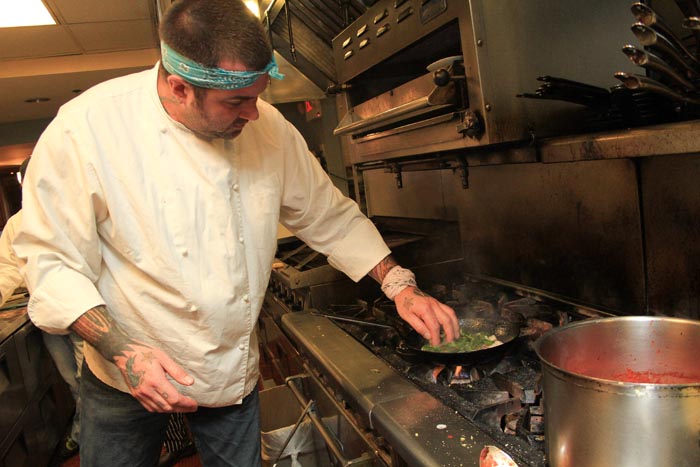Nothing says small and sweet like bay scallop season.
Jewels for both the palate and year-round economies, bay scallops have become almost unique to Vineyard waters — Nantucket and Martha’s Vineyard are two of the last places with a thriving commercial season. For many an Island fishermen bay scalloping has become the backbone of the off-season economy, giving them the ability to make a solid day’s pay in the dead of winter.
They also keep Island chefs happy. Most agree the bay scallop’s flavor stands on its own.
“I think bay scallops should be left as close to alone as possible,” chef Ben deForest said in his kitchen at Zephrus this week. Mr. deForest took over as chef at the Vineyard Haven restaurant this past summer. “I put them in a cast iron steel pan, a very hot pan with canola oil or a nice neutral oil, and I put them in there and I don’t touch them. Add a little salt and pepper, maybe a little butter, squeeze some lemon and that’s it. That and a spoon is all you need.”
The biggest mistake people make when cooking bay scallops is not having a hot enough pan and overcooking them, Mr. deForest said.
“It’s all over in a minute, 60 seconds tops,” he said. “If you cook them too far they just get too rubbery.”
With scallops, the simpler route is usually better.
“I think people add cheese and weird stuff but they’re perfect as is,” he said. “There’s a reason people pay $25 a pound because they’re absolutely perfect.”
Sweet as a Life Savers candy, he said.
The scallop meat is the adductor muscle of the shellfish and their sweetness is due to a reserve energy chemical called glycogen, which is made up of a string of simple sugars.
To bring out the sweetness Mr. deForest prefers to pan sear his bay scallops. Earlier this week he demonstrated his technique, beginning by pouring in enough canola oil to fully cover the pan, heating it for several minutes, then tossing in a handful of scallops.
“For the first 30 seconds put them in and don’t touch them,” he said. “People want to shake them but it’s not worth it.”
He added some fresh chard, caramelized red onions and blanched turnips, both prepared beforehand. Thirty seconds later it was all over. With one snap of the pan at the end, the meal was on a plate, drizzled with balsamic reduction and basil oil.
Mr. deForest buys about five pounds of bay scallops every few days, preshucked and ready to cook. He’ll serve them throughout the season, always fresh.
“Some people sell them frozen but I just can’t do it,” he said. “It’s nice too, buying fish from people you know is a really nice thing. It’s great to use a product that doesn’t have to travel 1,500 plus miles to get to you.”
Tea Lane Caterers chef Dee Smith likes to broil her scallops. She butters a casserole dish and places the scallops in, packed together to restrict their movement. A sprinkle of breadcrumbs to protect the scallops from drying out followed by a few dollops of butter finishes the preparation. For a pound of scallops she uses three tablespoons of butter and ¼ cup of fresh bread crumbs on top.
She broils the dish for six minutes, or if the scallops are bigger a little longer. You want them medium rare, she said. Overcook them and “they turn out like rubber pencil erasers.”
Ms. Smith serves her scallops with a few tablespoons of heavy cream. “It’s really simple,” she said. “That’s a scalloped scallop.”
For a ceviche she adds extra virgin olive oil, lemon and lime juice and a chiffonade of cilantro and scallion, salt and pepper, and marinates it overnight.
Christian Thornton, the chef and owner of Edgartown restaurant Atria, said a ceviche is perfect for scallops, although he’d be happy to eat them raw as well. A little olive oil, lemon juice and sea salt is all you need.
“I like bay scallops, period,” he said this week. “I love the seasonality of them. I love it’s a short period of time. It screams the holidays for me. They’re like eating candy. You can eat them raw or cook them as I do quite often but they’re kind of the perfect food.”
Mr. Thornton serves them over pureed squash, pasta dishes or soup. Simplicity always reigns.
“If you wave a scallop above a hot pan that’s probably enough,” he said. “Get your pan really hot and don’t overcrowd the pan, throw a few in at a time. Let them sear for a few seconds on either side. They’re going to caramelize almost immediately or turn brown on the edges and get crispy. Get them out of your pan and eat them. Put them on top of your pasta, put them on top of your salad, put them on top of your soup, anything.”
For those out harvesting their own scallops he recommends freezing the extra scallops in salt water and defrosting them in the warmer months after scalloping season is over.
He did recognize the amount of work that goes into harvesting the mollusks, but said he wasn’t crazy enough to join them.








Comments
Comment policy »